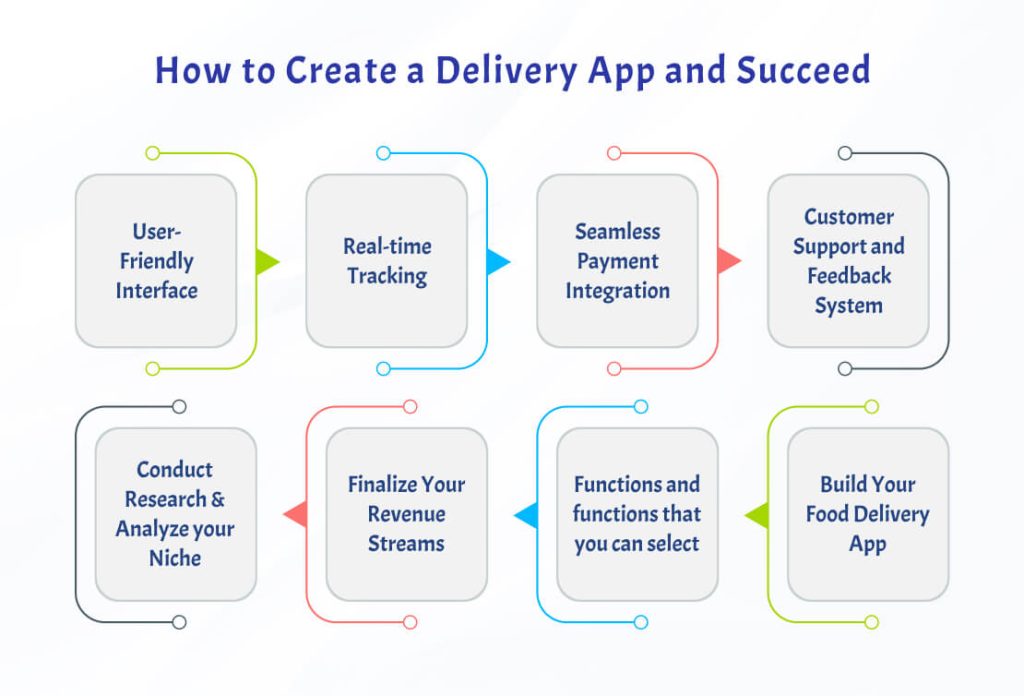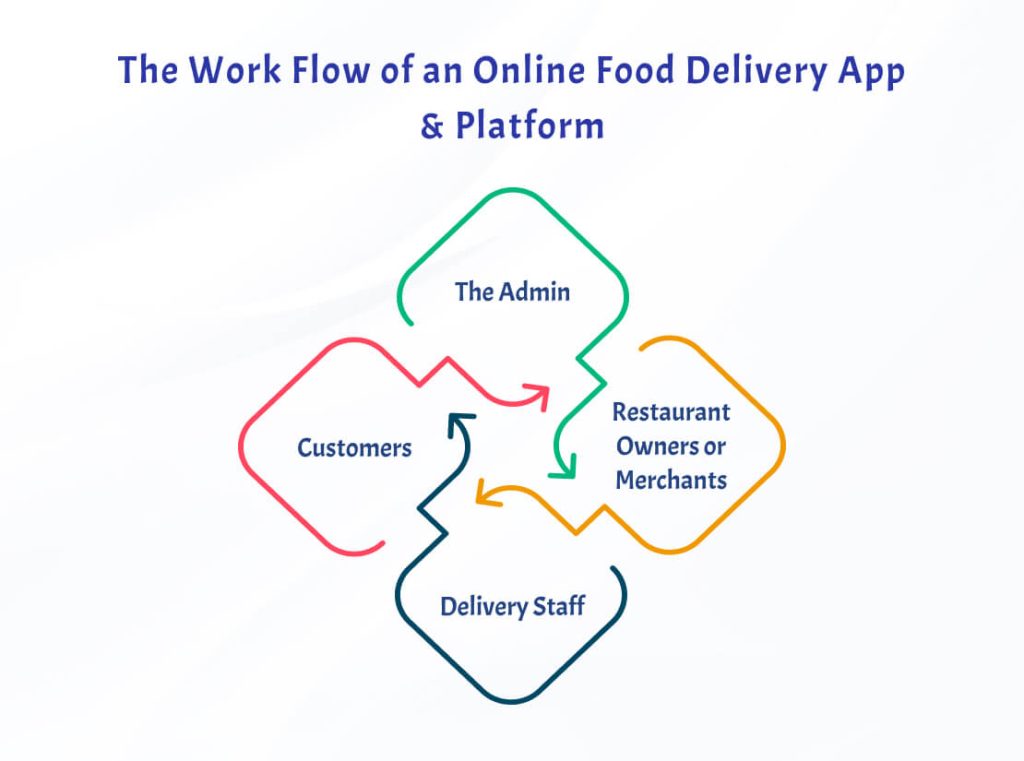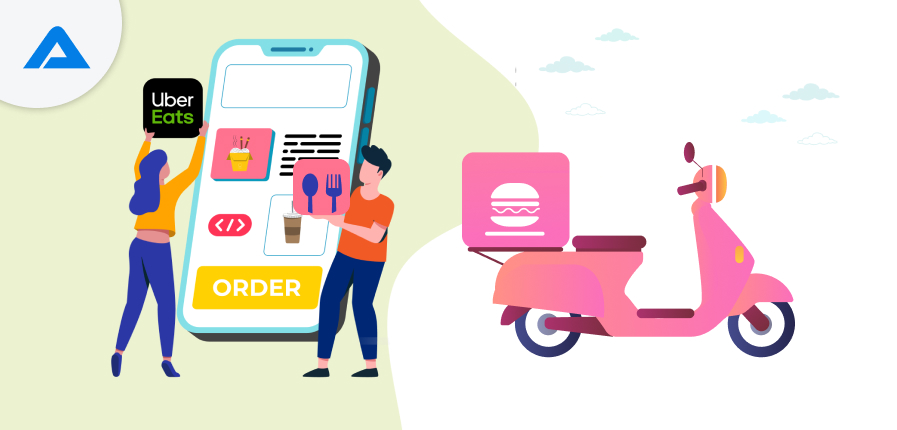The online platform for food delivery gives customers the option and convenience of eating just by tapping their phones. Restaurants used this method to provide food delivery. However, the technique has experienced changes in speed over the last few years. Food delivery services online allow restaurant owners to get the best of traditional and digital advertising channels.
In today’s fast-paced digital age, applications that aid in food delivery have reached the top of our agendas. They’ve revolutionized how we view ordering food items and consume. This article examines how important these apps are in delivering food and drinks in our modern times and also provides an overview of the ever-changing world, which is changing food distribution.
Food delivery apps have blasted in popularity over the last few years. It is the ideal opportunity for businesses to design particular menu-ordering apps for food delivery to customers, allowing users access to the application. Costs for apps that offer food may range between $12,000 and $25,000. Prices can rise depending on the method of delivery that you select to deliver food, as well as the app’s complexity degree. Also, it depends on the specific features of your app for food delivery you’d like to include.
What is a Delivery App?
Knowing how to build the food delivery app development is vital to compete in the modern marketplace; however, let’s take a deeper look at its meaning. Delivery apps are online or mobile-based services that allow users to purchase products or services that can be delivered to the location of their choice. The apps offer various options, including food delivery services like Uber Eats, grocery delivery like Instacart, and multiple items from local shops. They streamline the ordering process, payment, and delivery, all from the same interface. In just a couple of taps, the users can browse menus, choose items, and keep track of their deliveries with real-time accuracy, making delivery applications a standard in the convenience-driven marketplace.
Why Create a Food Delivery App & Platform?
The demand for food delivery applications is rising since they can connect customers and eateries. There are many benefits to the integration of a food delivery application into your food delivery company. Here are the top reasons that you ought to think about developing a food delivery application:
With the growth of smartphone users, the trend of placing orders online for food and getting deliveries to their doorsteps is also increasing. The result is that there’s a massive demand for delivery services. Therefore, businesses need to purchase an application for food delivery for their business to remain competitive in this industry.
How to Create a Delivery App and Succeed

Creating a delivery application is like preparing a meal with the correct ingredients to ensure it’s an instant hit. However, let’s take a real-world perspective – it isn’t only about the process of creating an app for delivery; it’s about bridging a gap or solving a need and making life easier for people.
User-Friendly Interface
The first thing to consider is that your application should be simple. Imagine that your user is in the midst of a problem, hungry, or needs to be more knowledgeable about technology. Your application must be easy enough for even your grandmother to use it without contacting you to get help. The big buttons, the precise choices, and a straightforward design – that’s what you need to have. No one likes to twirl in the maze.
Real-time Tracking
And who wouldn’t love knowing where their food order is? It’s like having a mini-trip via your smartphone. Through real-time tracking, customers can track their delivery route from the point of purchase to their door. This isn’t just about waiting around; it’s also about seeing the process unfold, making the waiting much less complicated.
Seamless Payment Integration
Let’s discuss payments. The process should be as simple as tapping on your preferred dating apps. If it’s credit cards, digital wallets, or even cash delivered, make it easy to choose and ensure it’s secure. There are no hidden charges that pop up at the last minute! Remember that a cumbersome payment method is like getting hit by a speed bump at maximum speed. No one likes the experience.
Customer Support and Feedback System
We must recognize the importance of customer support and feedback systems. Make sure your customers have an opportunity to voice their opinions. If they’re singing praises or complaining and complaining, an effective feedback system will be like a digital wide-open door. This is all about making sure people feel valued and respected. If things get complicated (because we all know often), Your support team is always alert and ready to flip the frowns around.
Conduct Research & Analyze your Niche
The initial step is to investigate and analyze the market. It is essential to study your competition thoroughly, examine the advantages and disadvantages of their products, and take lessons from their failures. The in-depth analysis and research can help you develop the perfect app to respond to the demands in the marketplace.
Finalize Your Revenue Streams
If you’ve settled on implementing a solid business plan, The next stage is determining the income streams. Different revenue streams may aid in generating financial benefits; therefore, knowing all possible ways to earn revenue from your business is essential.
Functions and functions that you can select
After finalizing the revenue streams, you must decide on the app’s capabilities. The right combination of functions and features for your app for food delivery can help you develop an app that’s easy to use, effective, and user-friendly. In addition, it can help meet your business goals and satisfy the demands of your market.
Build Your Food Delivery App
The next part is deciding on an appropriate development methodology for the app for food delivery. The marketplace has many options, each with unique characteristics and functions. Business owners can opt for customized development or a pre-made option. The ready-made option has advantages because it’s fast, hassle-free, and economical compared to custom software development. The choice of a solution is according to your needs and financial budget.
The Work Flow of an Online Food Delivery App & Platform

The Admin
The administrator has complete control over the entire platform. By using the admin panel dashboard, the administrator can quickly handle the interface of the food delivery service and track diverse activities, including orders made for delivery, newly registered users, and reviews.
Restaurant Owners or Merchants
The restaurant owners sign up on the platform and provide the details of their restaurants and products. Merchants may sign up as a single restaurant or several restaurants based on the subscription package selected by the merchants. With the dashboard for merchants, the restaurant’s owners can manage menus and alter them to accept or deny orders, design promotions and discounts for customers, and keep track of the sales they make and their profit.
Delivery Staff
Delivery agents can register on the platform that provides food delivery through the creation of accounts in the app for mobile. When the order has been accepted, the order is sent to delivery staff members near the restaurant’s location via the app for the delivery personnel. The delivery staff can either take or decline the order on their availability.
If any delivery agents don’t receive the delivery, The admin retains the right to assign an order to any partner.
Customers
Customers can create accounts with the platform for food delivery or order as guests through the app for food delivery. Customers can order their food from the many restaurants that deliver to their area. When the client has chosen the items they want to purchase, they can make their order with just a couple of clicks from their phones.
Food Delivery App Development Trends
Technology constantly evolves; companies can offer various tools to aid their customers. An individualized marketing plan is an innovative technology that is now a part of the ever-changing landscape of food delivery apps. It has the potential to make a change in the way that customers use the applications.
Thanks to AI’s help with data analytics and customizing marketing, marketers can alter the user experience to fit their needs. This improves the retention of customers as well as their satisfaction. Utilizing AI algorithms to evaluate customers’ behaviour and patterns may be native to traditional marketing techniques.
Food delivery apps utilize the information to offer recommendations that lure consumers into products they will like. This degree of customization could boost the speed of conversion and can help build a stronger relationship between the app’s users and its users.
Voice-Enabled Ordering
With the growing popularity of virtual voice assistants and the rising popularity of virtual voice assistants, it’s time before we can use the technology to facilitate food ordering. Virtual assistants like Siri and Alexa provide customers with smooth, hands-free interaction. It is possible to simplify ordering with the help of voice technology that lets users make purchases using their phones by using their voice.
This process is possible for people handicapped and available to anyone who travels. Since technology to recognize speech improves accuracy and efficacy, the speed and precision of this ordering process will drastically alter how food distribution is handled.
Dynamic Pricing Model
One of the significant benefits of using this most technologically advanced system is that it provides customers with many options at reasonable costs. Adjustable pricing models dynamically are built upon the ride-sharing model in which prices change in real time due to supply and demand.
When it is peak time or a significant need, the price could be cut to encourage customers to place orders in less crowded times or make other arrangements. For example, Uber Eats uses machine algorithms to determine the demand for food delivered to diverse locations during different hours throughout the day. It can charge higher costs during peak times in times of significant demand and reduce costs in times of low demand. Smaller.
Dynamic pricing is complicated and complex, yet it’s an efficient option for food delivery restaurants. Owners of businesses can improve their establishment’s profits and increase customer satisfaction by learning how they can manage their expenses.
Cloud Kitchen Optimization
Cloud kitchens, also known as virtual kitchens and ghost kitchens, are gaining popularity because of the rising demand to provide food items. They’re designed to take online orders, remove the need to establish eating areas and reduce overhead costs. It has revolutionized food preparation, catering to entrepreneurs and chefs and offering them the chance to concentrate on preparing food and its distribution.
Cloud Kitchen is a food delivery app development cost that allows developers to create applications that are easy to utilize. Cloud Kitchen will only be able to handle orders made on the Internet. This makes it easier to fulfil orders. Developers can create a more flexible user interface for Cloud Kitchen’s Cloud Kitchen app.
Cloud kitchens are an excellent option for helping food delivery applications reach many more customers because they allow the apps to operate from various locations without requiring a dining establishment. This can enable apps to expand their market reach and boost revenues.

Key Challenges in Entering the Food Delivery Market
In the delivery services, catering to food delivery is fascinating; however, it’s having issues. To navigate the marketplace easily, consider these suggestions to help you deal with the most significant challenges and potential options.
The Cost of Entry is Very High
The cost of creating and managing the software for food delivery can be prohibitive. Businesses must invest money in equipment, software, and food delivery app development.
To reduce their workload, business owners can opt for an economical technology focused on one market and collaborate with local restaurants. Local establishments could make logistics easier to deliver food by using local delivery companies that restaurants have already used. Regional partnerships can also help your business attract customers who are loyal and spread the message of the app to all who are interested, thus reducing costs for attracting customers.
On-demand food delivery App development is now a crowded marketplace with numerous established companies. The companies must distinguish themselves from others. To do this, it is essential to focus on giving their customers an enjoyable experience by offering something different to their clients. It is a matter of providing various dining options, faster delivery, and the ability to experiment with new Tues to improve the quality of their services.
Management of Operations is Complicated.
Coordinating restaurant staff, drivers, and customers at any given moment requires precise operations control. This complex coordination can cause issues and demands complex operational strategies to ensure an efficient order process, speedy dispatching, and effective communication. It will need expert help for development.
Benefits of Food Delivery Apps
Take a deeper review of the benefits of creating an application for food delivery to your company. If you need help deciding whether to proceed, these benefits will help you make a better decision.
Market Demand
We discussed the catering market in the past. If you look at the numbers, it’s easy to discern a grim scenario for restaurants and stores that aren’t ready to change with changing times.
Easy to Use and Order Food
Businesses and consumers alike can utilize an app for mobile food delivery.
It’s easy waiting for a call, trying to make sense of thick accents, or listening to the customers’ voices in the din of the kitchen.
It’s as easy as choosing the food items from a virtual menu or a grocery list. The items are then added to the cart, and payments are made ahead of time. Companies are paid instantly, and consumers gain from the convenience.
Increased ROI
Food delivery apps make money machines. You can earn a quick income from the first budget you set for development.
You must pay a monthly fee to access the app if you’re an app maker. It typically ranges from $300 to $1,000, based on your desired features and services.
Expand Your Business
Making a food delivery application will help generate a new source of income for your company.
Food delivery companies aren’t going away. Therefore, you must either evolve to the changing times or risk losing your customers.
Conclusion
The next wave of apps that cater to food delivery comes with innovative and exciting concepts. These range from Artificial Intelligence (AI) and machine learning to advancing applications for food delivery businesses with non-contact delivery. This market is expected to change to satisfy customers’ needs, which change constantly. Through new sustainable techniques, technological advancements, personalization, and technology, Food delivery services are anticipated to increase in popularity and evolve to meet the constantly changing technological world. Because consumers have grown dependent on apps for the preparation of their food, it’s crucial to take advantage of potential opportunities and overcome obstacles to create a new generation of delivery services that are efficient and sustainable.
If you’re working with a limited budget, it could be worthwhile outsourcing the development of your app to a third-party app designer with expertise in an app for mobile to food delivery businesses. You can lower the development costs with a low price and various engagement methods. However, it is essential to select a reputable and experienced firm with experience in developing applications for food delivery.

Satisfy Your Customers’ Hunger! Create a Custom Food Delivery App Now!

Pooja Upadhyay
Director Of People Operations & Client Relations

